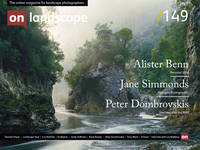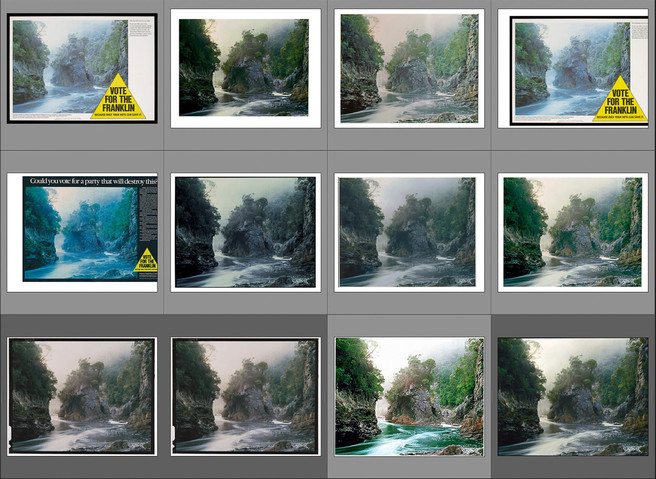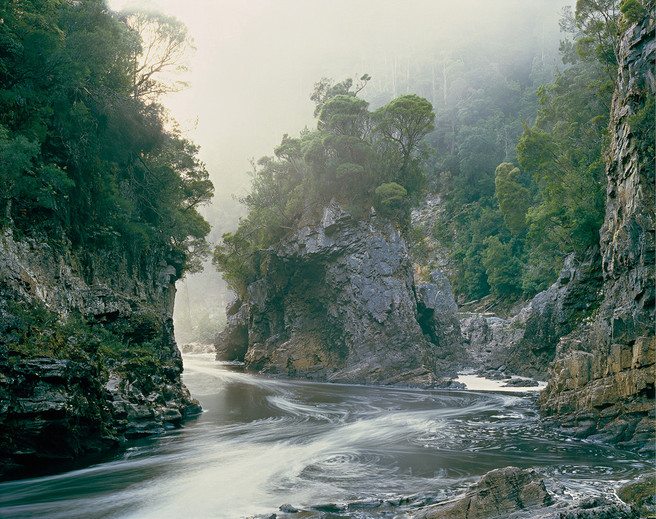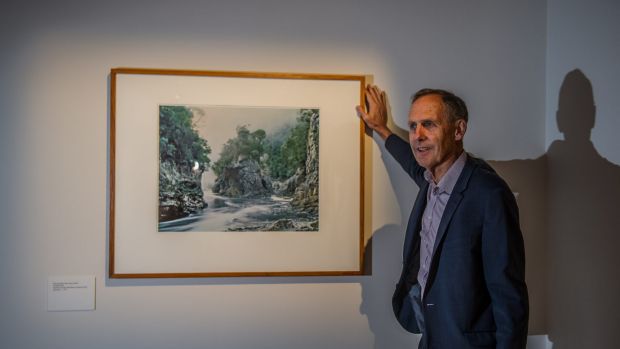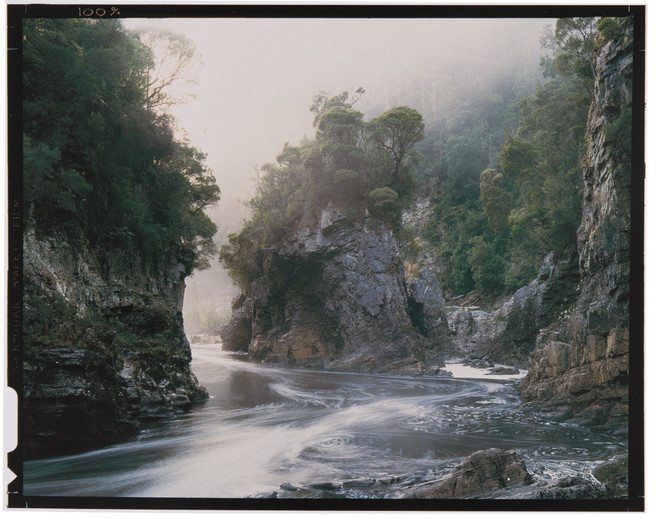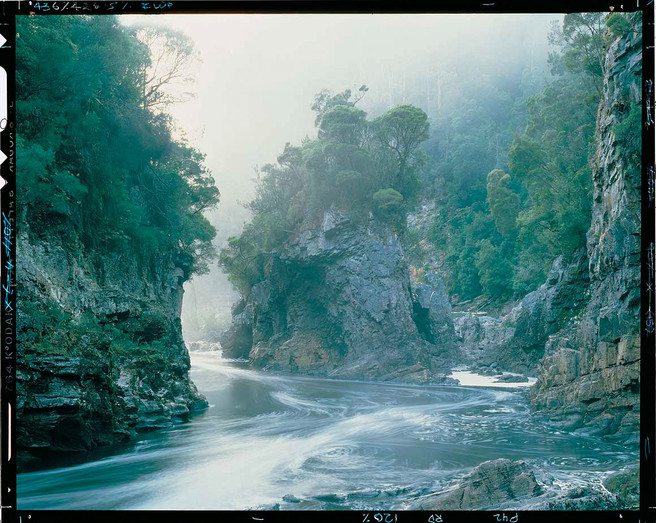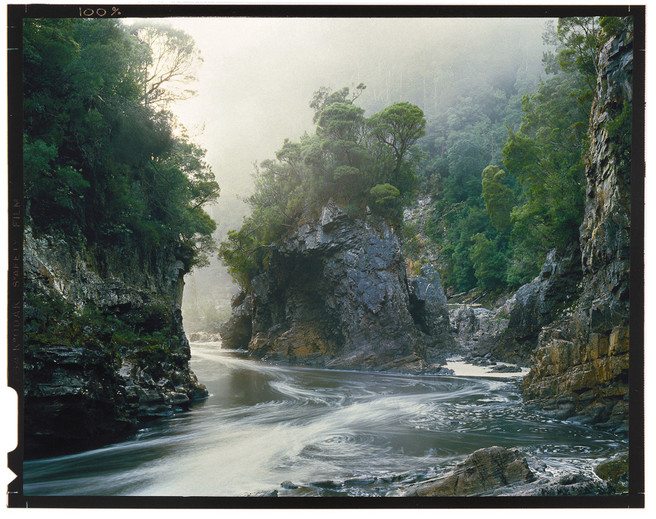A Case Study of the Rock Island Bend photograph by Peter Dombrovskis

Tim Parkin
Tim Parkin is a British landscape photographer, writer, and editor best known as the co-founder of On Landscape magazine, where he explores the art and practice of photographing the natural world. His work is thoughtful and carefully crafted, often focusing on subtle details and quiet moments in the landscape rather than dramatic vistas. Alongside his photography and writing, he co-founded the Natural Landscape Photography Awards, serves as a judge for other international competitions. Through all these projects, Parkin has become a respected and influential voice in contemporary landscape photography.
Whilst writing the article about the recent Peter Dombrovskis book, it quickly became clear that there were no real, definitive versions available for his pictures that could be used to say "This is what they were supposed to look like!". During his life, Peter created many famous images, but by far the most famous of these is "Rock Island Bend" and it has been printed for many purposes, from newspapers to magazines, diaries to calendars, posters, fine art prints, stock photos. When I came to try to find out what it was "supposed" to look like, I had a bit of a problem.
Firstly, the National Library have Peter's original transparencies so they could be a good reference. However, they also have a few prints and posters which just happen to look quite different. How do we know that Peter wanted the image to look just like the transparency when contemporary prints looked different?
If you look online you can find the original newspaper and magazine versions used in protests at the time. However, the quality of repro means that these can't be considered authoritative either. The image is in various stock libraries and news archives but digital versions suffer from bad colour management on a regular basis.
I collected as many of these as I could and also scanned a few from books and here is a panel showing the range of representations I found.
Wow! OK, that's pretty extreme. We have a saturation range from almost zero to Peter Lik and a colour temperature range from normal to Siberian winter.
In order to try and ascertain which version is closest to Peter's intent, I had to do a bit of digging. In the process, I found four versions that might be recognised as authoritative.
Finding the Authoritative Versions
After Peter's death, his wife, Liz Dombrovskis guided the Wild Island gallery and Simon Olding to produce an exhibition of Peter's work. This presumably was signed off by Liz.
The book "Simply" was produced in association with Liz as well and includes a reproduction of a 'copy' transparency of the image
The book "Wild Rivers" was produced during Peter's lifetime so I would imagine it was fairly close to what he wanted.
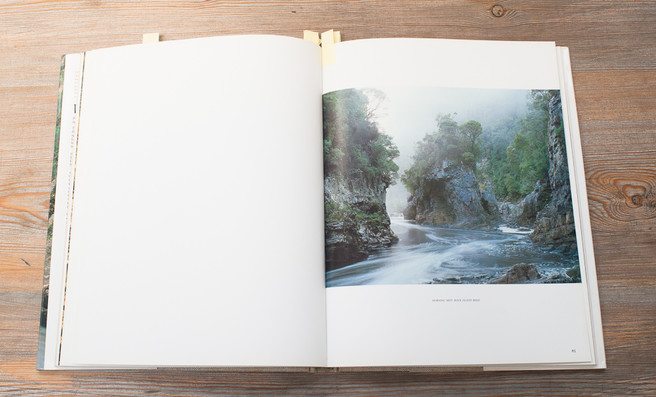 In 2010, for the 40th Annual Earth day, the International League of Conservation Photographers voted this photograph as one of its top 40 nature photographs of all time. Here's the transparency they used (a dupe of a dupe!)
In 2010, for the 40th Annual Earth day, the International League of Conservation Photographers voted this photograph as one of its top 40 nature photographs of all time. Here's the transparency they used (a dupe of a dupe!)
You might ask why wouldn't we include the version used for the Franklin River campaign? Well in days gone by the transparency used to be sent to 'repro' to be scanned for print every time it was used (well, most times). Hence it was rare that any post processing was done and if it was it probably wouldn't be with Peter's approval.
A Bit of Detective Work
Given these few images, my feeling is that 2014 reproduction is probably closest to Peter's desired rendering. The "Simply" version just appears too warm and I have a feeling it is actually a 'copy' transparency that has had a warming filter placed over it (a warming filter doesn't work like a change in temperature in Photoshop or Lightroom. It affects the lights and darks more).
Given this, I think the version below is probably as close as we can expect to Peter's vision. This is based on the "Simply" version but cooled a little and removed the warmth from the warming filter that affected the shadows and highlights. I also referred to some of Peter's photographs of the Franklin river at dawn and in the mist to see how they look and Simon Olding's reworking from the 2014 exhibition.
A Dupe?
Whilst working on this, I also found an interesting fact. Peter actually took two images when at this location, contrary to many descriptions of his working practice. I can only assume he did this because he expected to have to send a transparency out to repro and wanted a backup just in case.
It turns out that he probably did the right thing as following its use in the Franklin River campaign, the image changed slightly. i.e. The version used in all of the environmental posters and articles isn't the same one used in all of the books and exhibitions!
To show what I mean, here's one of the original Franklin river adverts.
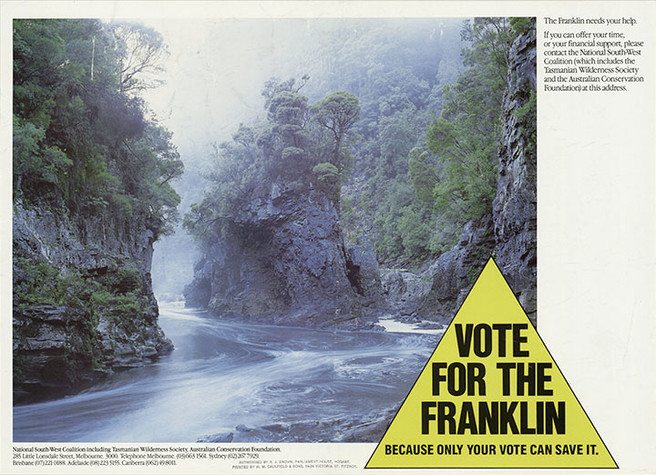 It's not obvious that it's different, but take a look at the comparison below of the bottom section of each picture. The top is the version used in the Franklin River campaign and the bottom was used in every other reproduction since Wild Rivers.
It's not obvious that it's different, but take a look at the comparison below of the bottom section of each picture. The top is the version used in the Franklin River campaign and the bottom was used in every other reproduction since Wild Rivers.
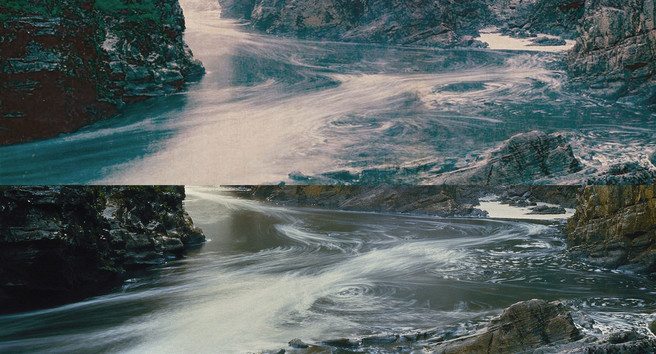 I can only presume that the original transparency got lost or damaged in some way.
I can only presume that the original transparency got lost or damaged in some way.
Conclusion
So, we have a situation where we not only have no idea what the image should have looked like according to Peter himself but also that the original image has disappeared and the one we now recognise is actually the 'B sheet'. It's probably also the case that many photographers change their idea of what an image should look like through the years and so what Peter would have liked had he been alive now may be very different from what he would have liked on the day he created it. A very similar thing happens when bands play their 'classic' songs at live concerts later on in their careers; the urge to 'tweak' things a bit means that the audience gets a new version that doesn't match up with their memories.
If we want our images to be seen by others in the way we desire, we really need to create our own authoritative, canonical versions and I would highly recommend that these are stored as both an archival print and a digital version saved as an uncompressed TIFF in a common colour space (sRGB, Adobe1998 or ProPhoto for instance) and recent tests show that the most archival digital storage is probably Blu Ray because of it's harder outer coatings.

